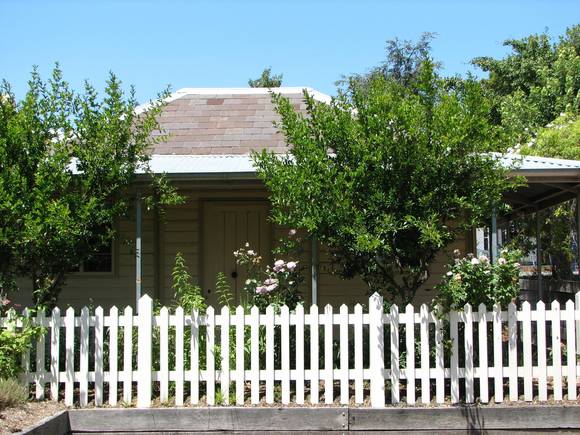| Back to search results » | Back to search page » |
|
PREFABRICATED COTTAGE
Location14-18 DOUGLAS STREET TOORAK, STONNINGTON CITY
File Number607648LevelRegistered |
|
Statement of Significance
What is significant?
The pre-fabricated cottage at 18 Douglas Street, Toorak was designed by Robert Walker of Glasgow, and is of a type patented in 1852 as a system for the construction of portable houses of wood and iron 'suitable for emigrants'. The patented system consists of cast iron pillars with grooves or slots vertically on four sides, bolted to a base plate into which tongued and grooved boards are inserted to form walls. Other components of the system include cast iron door and window frames and the timber doors and windows themselves. This cottage has probably been on the present site since 1856 and may have been brought to Australia by Robert Anstruther Balbirnie, the owner of the land at that time, when he made a trip to England in 1854. This two room cottage was hidden by a brick Edwardian addition at the front, and timber additions at the rear and at one side. These additions were removed in 1997 under a permit exemption.
How is it significant?
The pre-fabricated cottage at 18 Douglas Street, Toorak is of scientific (technical), historic and architectural significance to the state of Victoria.
Why is it significant?
The pre-fabricated cottage at 18 Douglas Street, Toorak is of historic, scientific and architectural importance as the only known example of the Robert Walker patented system of wood and iron portable house construction in Victoria. It is of scientific (technical) importance for demonstrating the innovative methods of building construction in the mid nineteenth century which were designed to cater for the needs of emigrants. The Robert Walker patented system could be erected quickly and cheaply, using a combination of cast iron and wood. The materials shortages caused by the goldrushes in Victoria in the early 1850's created a demand for such houses which were imported into Victoria in the thousands at that time.
Group
Residential buildings (private)
Category
Cottage







